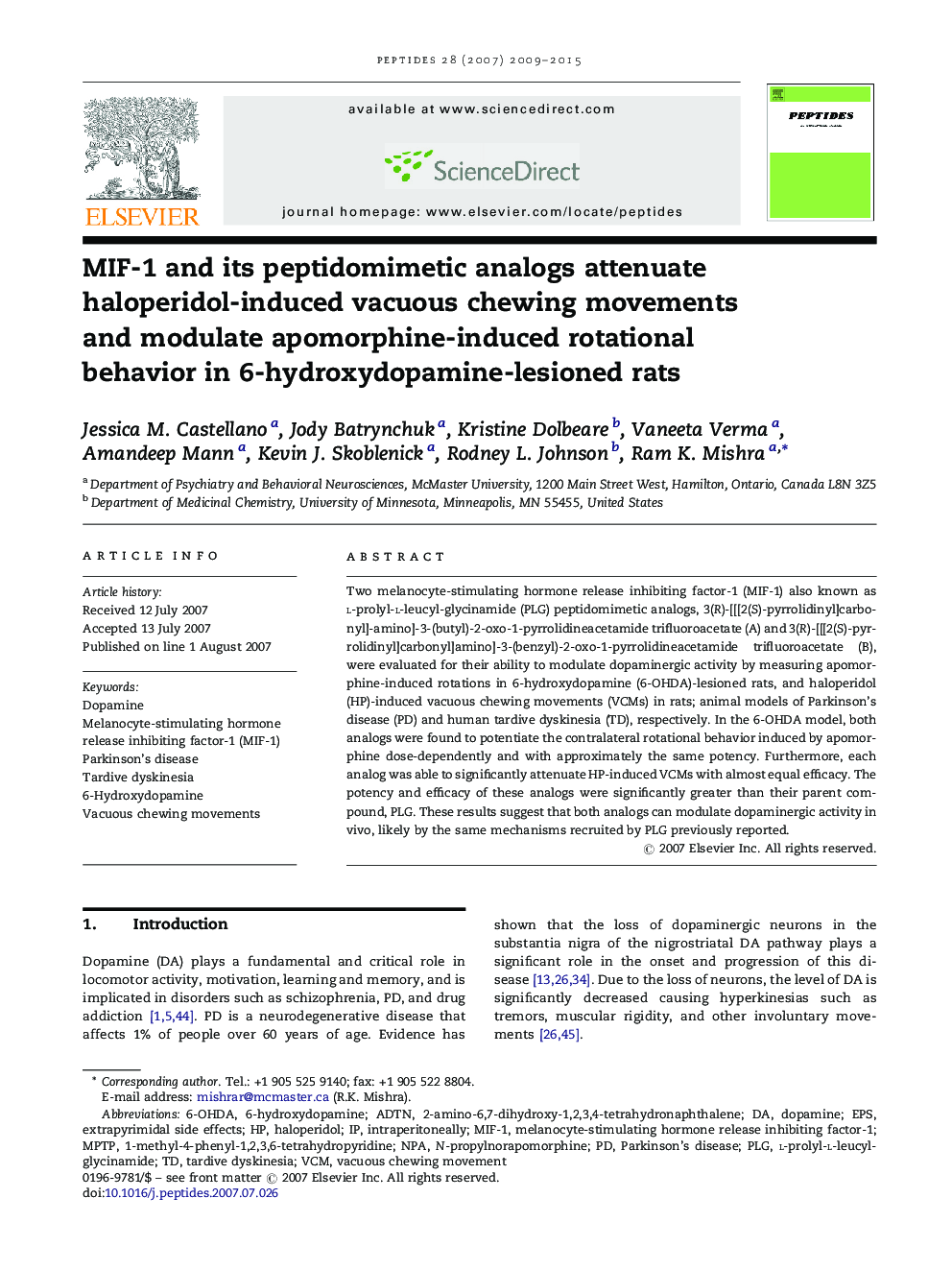| Article ID | Journal | Published Year | Pages | File Type |
|---|---|---|---|---|
| 2007706 | Peptides | 2015 | 7 Pages |
Two melanocyte-stimulating hormone release inhibiting factor-1 (MIF-1) also known as l-prolyl-l-leucyl-glycinamide (PLG) peptidomimetic analogs, 3(R)-[[[2(S)-pyrrolidinyl]carbonyl]-amino]-3-(butyl)-2-oxo-1-pyrrolidineacetamide trifluoroacetate (A) and 3(R)-[[[2(S)-pyrrolidinyl]carbonyl]amino]-3-(benzyl)-2-oxo-1-pyrrolidineacetamide trifluoroacetate (B), were evaluated for their ability to modulate dopaminergic activity by measuring apomorphine-induced rotations in 6-hydroxydopamine (6-OHDA)-lesioned rats, and haloperidol (HP)-induced vacuous chewing movements (VCMs) in rats; animal models of Parkinson's disease (PD) and human tardive dyskinesia (TD), respectively. In the 6-OHDA model, both analogs were found to potentiate the contralateral rotational behavior induced by apomorphine dose-dependently and with approximately the same potency. Furthermore, each analog was able to significantly attenuate HP-induced VCMs with almost equal efficacy. The potency and efficacy of these analogs were significantly greater than their parent compound, PLG. These results suggest that both analogs can modulate dopaminergic activity in vivo, likely by the same mechanisms recruited by PLG previously reported.
